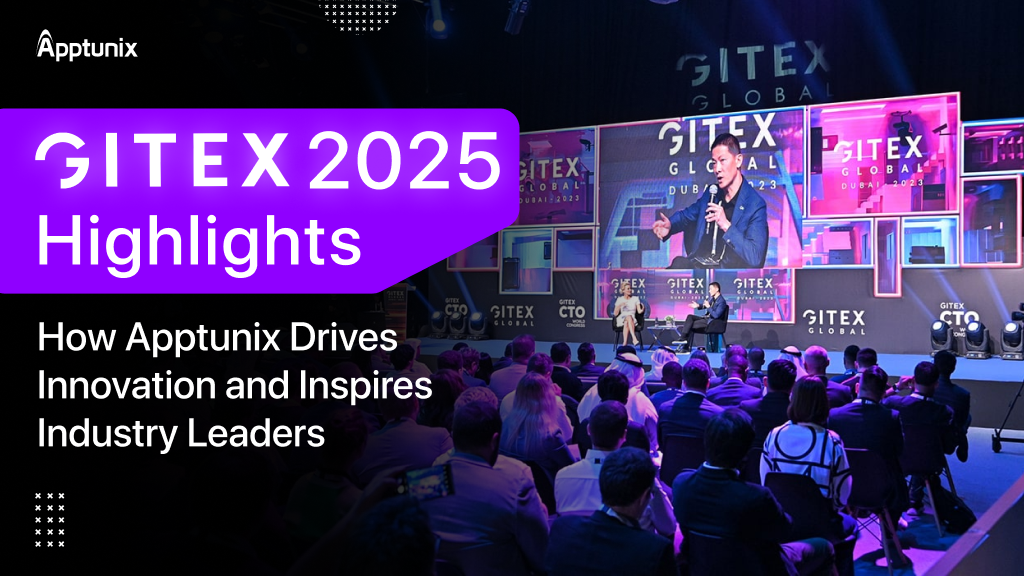
GITEX 2025 Highlights: How Apptunix Drives Innovation and Inspires Industry Leaders
86 Views 11 min October 28, 2025

Nikhil Bansal is the Founder and CEO of Apptunix, a leading Software Development Company helping startups as well as brands in streamlining their business processes with intuitive and powerful mobile apps. After working in the iOS app development industry for more than 10 years, he is now well-equipped with excellent problem-solving and decision-making techniques.
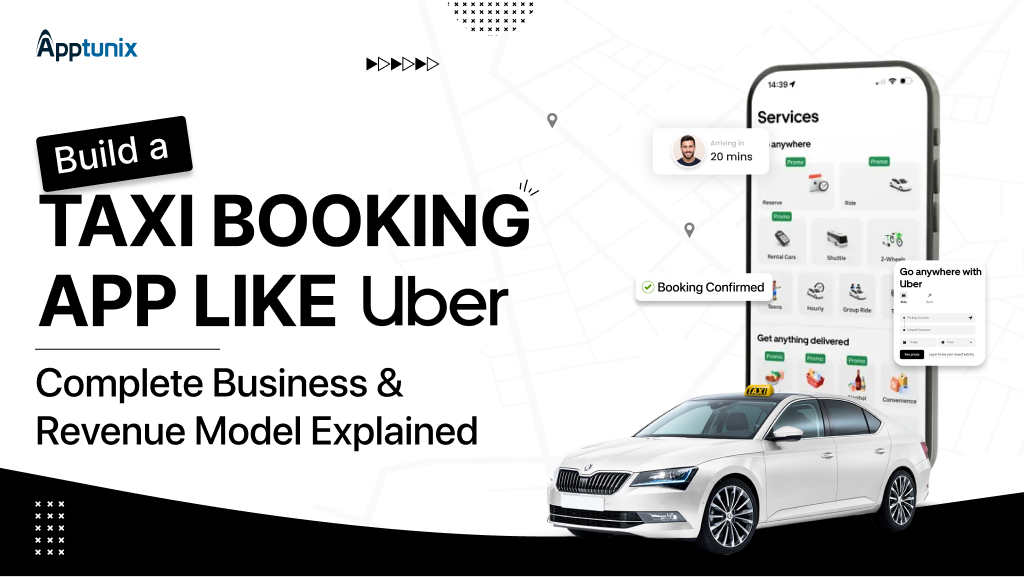
The global ride-hailing market is projected to reach $691 billion, with an impressive 18.52% CAGR from 2025 to 2034. Yet, despite this massive growth, urban commuters still face long wait times, opaque pricing, and inconsistent service quality. This gap presents a significant opportunity for entrepreneurs to build a taxi booking app that is smarter and faster!
Uber transformed the transportation landscape by connecting riders with drivers through a simple app. But the market has evolved. Today, it’s about integrating electric vehicles (EVs), autonomous driving technology, and AI-powered ride matching to create a seamless and sustainable urban mobility experience.
In this guide, we’ll break down the Uber business model, Uber revenue model, taxi app development cost, and the strategies to build a profitable future-ready ride-hailing app.

Picture a city where hailing a cab is instant, fares are predictable, and every ride is reliable. That’s the world Uber created. Since its launch in 2009, Uber has expanded to operate in over 10,000 cities across 70 countries, completing more than 15 billion trips worldwide. The global ride-hailing market, now valued at $158 billion in 2025, has Uber as a central player, demonstrating that a well-designed taxi booking app can significantly impact urban mobility.
Before Uber, the taxi industry faced significant challenges:
Uber flipped the script:
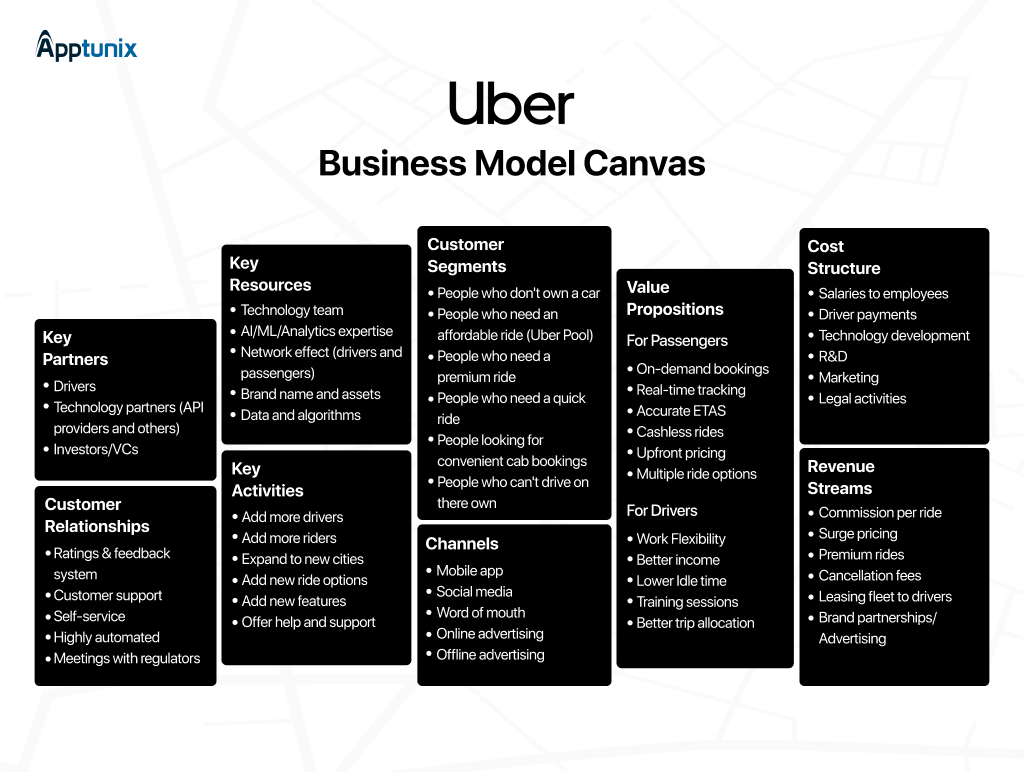
Today, the future of ride-hailing includes electric vehicles, autonomous taxis, AI-powered fleet management, and micro-transit solutions, giving modern entrepreneurs a chance to innovate beyond Uber. For entrepreneurs looking to build a taxi booking app, the lesson is simple: solve real problems for both riders and drivers, and create predictable, diversified revenue streams. Uber business model scaled globally without owning vehicles, reducing overhead and focusing on technology and platform management. Uber’s revenue comes from multiple sources, making it resilient and adaptable.
Building a taxi booking app like Lyft is about tapping into a high-demand, scalable, and tech-driven business. Here’s why entrepreneurs are turning to Uber-style apps:
The global ride-hailing market is growing rapidly, fueled by urbanization, smartphone penetration, and consumer preference for on-demand services. Launching a taxi app allows you to cater to this ever-increasing demand and capture a loyal user base early.
Unlike traditional businesses, a taxi booking app opens diverse monetization opportunities:
An Uber-style app is highly scalable. You can start in one city, perfect the operations, and expand to multiple regions or countries with minimal incremental cost. Technology handles the heavy lifting matching drivers with riders in real-time—making growth seamless.
With smart algorithms, GPS integration, and in-app payments, most operations—ride matching, fare calculation, route optimization—are automated. This reduces manual management, improves efficiency, and ensures a smooth experience for both riders and drivers.
By offering convenience, safety, and transparent pricing, your app can build strong customer loyalty. Features like ride history, loyalty rewards, and personalized promotions increase retention and establish your brand as a trusted mobility solution.
Every ride generates valuable data from rider behavior to peak traffic hours. This data can be leveraged to optimize routes, predict demand, run targeted marketing campaigns, and improve driver performance, giving your business a competitive edge.
The combination of multiple revenue streams, scalable operations, and the ability to diversify services (ride-hailing, delivery, rentals) ensures long-term profitability, even as competition increases.
Check Out Top 13 Taxi Booking App Development Companies & Developers
Launching a ride-hailing app today requires structured planning, technical precision, and a clear budget allocation. Here’s a detailed roadmap with estimated costs at each stage:
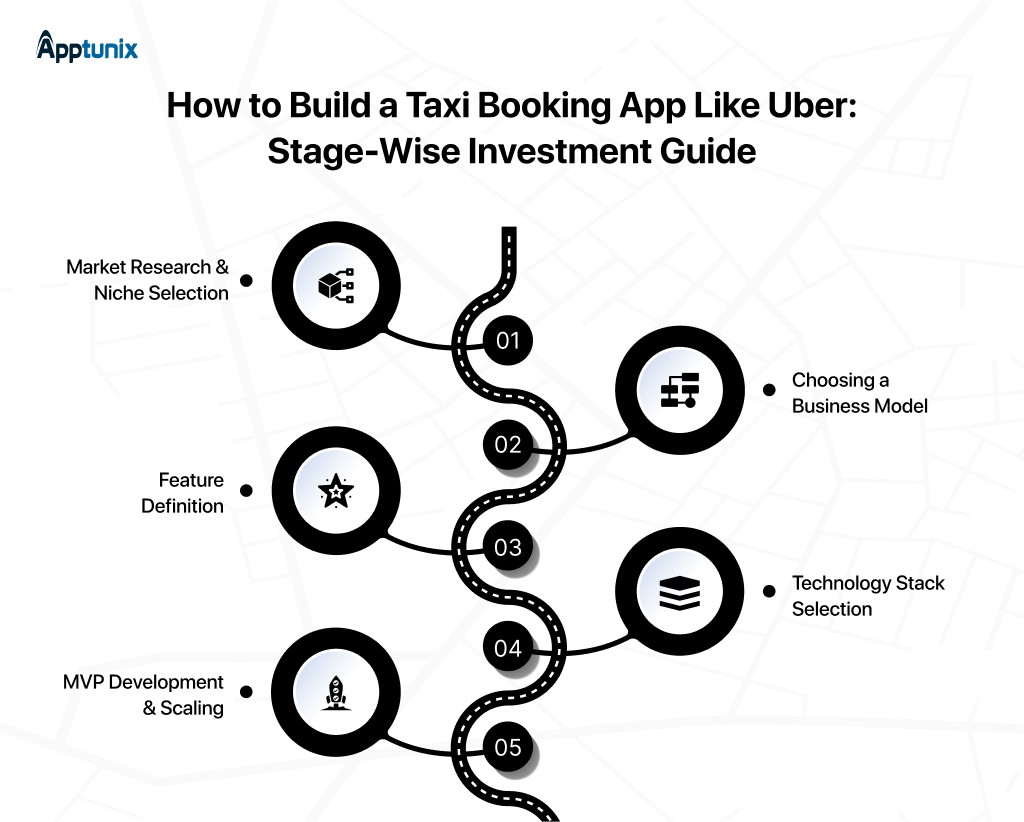
Before development begins, invest in research to identify high-demand areas, target users, and untapped niches.
Estimated Investment: $3,000–$8,000. This covers surveys, data analytics tools, market reports, and consulting services. A strong research phase ensures your app targets profitable segments from day one.
The model you choose defines both taxi app development cost and long-term ROI. The choice of business model significantly affects development costs and operational investments:
Aggregator Model: Connects riders with independent drivers. Lower upfront costs, easier scaling.
Estimated Investment: $20,000–$50,000 for tech development and initial marketing.
Fleet Ownership Model: You own vehicles and manage drivers. Higher initial investment but more control over service quality.
Estimated Investment: $80,000–$100,000+, including fleet purchase/lease, driver onboarding, insurance, and tech infrastructure.
Your app must combine core, advanced, and future-ready features for differentiation.
Core Features (Essential):
Advanced Features:
Future-Ready Features:
Estimated Investment: $25,000–$60,000 for MVP, depending on feature complexity. Adding AI and predictive modules can increase cost by 15–25%.
A robust, scalable tech stack ensures your app can grow from one city to multiple regions:
Estimated Investment: $15,000–$40,000 for backend, frontend, and API integrations. Enterprise-level features, analytics dashboards, and IoT modules may add an extra $10,000–$20,000.
Launch a Minimum Viable Product (MVP) to validate assumptions and gather real-world feedback.
Estimated Investment: $20,000–$50,000 for MVP launch. Scaling to additional cities may cost $10,000–$30,000 per city, depending on local marketing, compliance, and server infrastructure. Partnering with a taxi booking app development company can help startups launch affordable, feature-rich apps, while enterprises may prefer custom taxi app development for deeper integration and advanced functionality.
Building a taxi booking app requires careful planning and budgeting. Costs depend on app complexity, features, technology stack, and location of developers. Understanding this breakdown helps both startups and enterprises make informed investment decisions.
The MVP focuses on core features such as ride booking, GPS navigation, digital payments, ratings, and a basic admin panel. Test your market idea, validate the business model, and collect user feedback without heavy upfront investment. Development cost depends on platform choice (iOS, Android, or cross-platform), developer location, and tech stack complexity.
A full-featured taxi app includes advanced and future-ready features:
Scale operations across multiple cities, increase engagement, maximize revenue streams, and ensure enterprise-level control. The wide range reflects feature complexity, AI and IoT integration, multi-city operations, and enterprise-grade analytics.

The total cost to build a taxi booking app is shaped by feature complexity, platform choice, developer expertise, integration needs, and ongoing maintenance. Startups can launch MVPs at a lower cost to validate the market, while enterprises aiming for full-scale operations must budget for advanced features, multi-city expansion, and enterprise-grade infrastructure. By understanding these factors, entrepreneurs can make strategic decisions that balance cost, quality, and future scalability.
The range and sophistication of features play the biggest role in determining the taxi app development cost. A basic ride-booking app with real-time tracking, in-app payments, and ratings is relatively affordable, making it ideal for an MVP. However, adding advanced functionalities such as AI-powered predictive ride suggestions, dynamic surge pricing, loyalty programs, or integration with electric vehicles significantly increases development time and technical complexity. Apps that support multi-service platforms, such as combining rides with deliveries, freight, or micro-transit options, require additional backend logic, testing, and infrastructure, further driving up costs.
The platform you choose for your taxi app directly affects both cost and market reach. Single-platform apps, built exclusively for iOS or Android, are faster and cheaper to develop, making them a popular choice for startups or MVP launches in targeted regions. On the other hand, cross-platform solutions like Flutter or React Native allow you to develop a single codebase that works for both iOS and Android. This approach increases initial development effort slightly but reduces long-term maintenance costs, simplifies updates, and ensures a consistent experience across devices. Choosing the right platform depends on your budget, timeline, and target audience, and it is a critical decision that balances cost with scalability and market penetration.
The location and experience of your development team significantly influence taxi app development cost. Hiring developers in North America or Europe ensures high-quality coding, rigorous testing, and adherence to global standards, but comes at a higher hourly rate ($80–$150/hour). In contrast, India, Southeast Asia, or Latin America offer skilled developers at a fraction of the cost ($25–$50/hour), making it an attractive option for startups looking to optimize budgets. For enterprise-level apps, combining local project managers with offshore development teams can balance quality, communication, and cost efficiency.
Modern taxi apps depend on a range of third-party integrations to deliver a smooth and reliable experience for both riders and drivers. Key integrations include payment gateways like Stripe, PayPal, or regional wallets to enable secure, cashless transactions; navigation and mapping APIs such as Google Maps or Mapbox for real-time tracking and accurate routing; and messaging and notification services like Twilio or Firebase to keep users informed throughout their journey. Additionally, IoT or telematics solutions help monitor fleet performance and vehicle health, while analytics and reporting tools provide insights into ride patterns, peak hours, and revenue trends.
Launching a taxi app like Uber is just the beginning. Ongoing maintenance and upgrades are essential to maintain performance, security, and competitiveness. This includes regular bug fixes and security updates to prevent downtime or vulnerabilities, server and cloud maintenance to handle high traffic and ensure smooth ride-matching, and feature upgrades such as predictive AI modules, loyalty programs, or electric vehicle integration. For long-term sustainability, it is recommended to allocate 15–20% of the initial development cost annually for maintenance and updates.
Read More: Ride Sharing App Development: Features, Cost, Challenges & Future Trends
Building a profitable taxi booking app like Uber requires more than just connecting drivers and riders. Successful platforms leverage multiple revenue streams targeting riders, drivers, and strategic partners. Understanding the Uber revenue model and applying innovative strategies can help you create a sustainable and scalable business.
The core revenue stream for most taxi apps is a commission on every ride booked through the platform. Typically, platforms charge a fixed percentage of each fare, which can range from 15–25% depending on market conditions. This model ensures consistent revenue and aligns the platform’s earnings with ride frequency.
Offering subscription packages can generate recurring revenue while increasing user loyalty. For riders, subscriptions can provide discounted fares, priority booking, or free cancellations. For drivers, plans may reduce commission fees or offer access to premium ride requests. This approach creates predictable revenue and encourages consistent engagement from both parties.
Dynamic pricing allows platforms to adjust fares based on real-time demand and supply. During peak hours, festivals, or high-demand zones, prices increase to balance availability while maximizing driver earnings and platform revenue. Coupled with AI-driven fare optimization, this strategy ensures efficient resource utilization and higher profitability.
Taxi apps can leverage advertising space and brand partnerships to generate additional revenue. In-app promotions, sponsored campaigns, or affiliate marketing programs allow brands to reach a targeted audience. For example, ads for restaurants, retail stores, or events can be displayed during ride booking, trips, or notifications.
Partnering with corporates, conferences, or events provides long-term contracts and predictable income. Companies often require dedicated transport services for employees or guests. Offering tailored packages and priority services can make your platform a preferred partner for business transportation needs.
Expanding beyond ride-hailing into deliveries, freight, or logistics increases revenue per user. Platforms like Uber have successfully diversified with Uber Eats and Uber Freight, showing how multi-service integration can boost engagement and overall profitability.
Using analytics and big data allows platforms to identify high-demand routes, peak hours, and rider preferences, helping optimize driver allocation and reduce idle time. Data insights also improve marketing, cross-selling opportunities, and operational efficiency, indirectly increasing revenue.
Advanced AI modules can suggest personalized rides, packages, or discounts based on user behavior and past rides. These recommendations increase conversion rates, encourage repeat bookings, and enhance customer satisfaction.
Retention is critical for profitability. Loyalty programs and gamification reward frequent riders and top-performing drivers through points, tiers, or achievements. This drives long-term engagement, reduces churn, and boosts overall ride frequency.
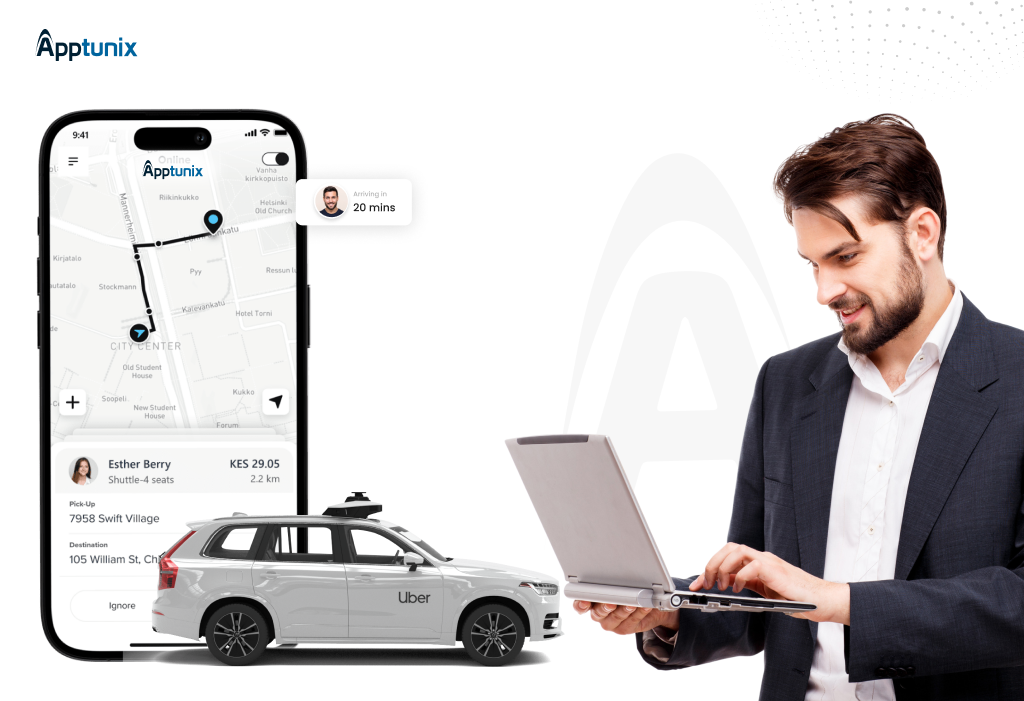
Taxis are everywhere, but convenience isn’t. Every minute a rider waits, a competitor gains ground. That’s why building a smart taxi booking app requires the right development partner. Apptunix creates platforms that scale, adapt, and lead in the ride-hailing market. Partnering with Apptunix ensures your taxi app is innovative, profitable, and ready to capitalize on a market projected to reach $218 billion by 2027.
Here’s why businesses trust us:
Proven Expertise: We’ve delivered custom taxi apps for startups and enterprises, helping clients launch quickly and scale confidently. Uber completes over 14 million rides per day, showing the potential for apps that get it right.
Future-Ready Technology: Our solutions integrate AI for predictive rides, IoT, electric vehicle support, and multi-service mobility platforms, preparing your app for emerging taxi app market trends.
Transparent Planning: With clear taxi app development cost estimates and project roadmaps, you can plan budgets and timelines accurately.
Scalable Solutions: Whether targeting one city or multiple markets, our architecture ensures your app grows seamlessly as demand increases.
Long-Term Support: From maintenance and upgrades to adding new features, we provide ongoing support so your platform evolves with the market.
Uber turned a simple idea into a $90 billion global business, proving that a well-designed business and revenue model can disrupt the taxi industry. Today, the winners are platforms that combine technology, innovation, and a customer-first approach.
By understanding the Uber business model, taxi app monetization strategies, and emerging trends, you can create a future-ready taxi booking app that stands out, attracts users, and drives revenue. Platforms using AI-driven routing can reduce idle time by up to 25%, while subscription and loyalty programs can increase repeat rides by 20–30%.
Whether you’re a startup seeking affordable taxi app development or an enterprise looking for a custom, scalable solution, the ride-hailing market is ripe for innovation.
Collaborate with expert developers to build a taxi app that delivers exceptional experiences, maximizes revenue, and positions your business at the forefront of urban mobility.

Q 1.How much does it cost to build a taxi booking app like Uber?
The taxi app development cost depends on features, platforms, technology stack, and location of developers. A MVP typically costs $20,000–$50,000, while a full-featured app ranges from $60,000–$100,000+ for startups and enterprises.
Q 2.What features are must-have for a taxi booking app?
Core features include real-time ride booking, GPS navigation, in-app payments, driver and rider profiles, ratings, and an admin panel. Advanced features like AI-based predictive routing, surge pricing, loyalty programs, EV integration, and micro-transit options make your app competitive.
Q 3.How does the Uber business model work?
Uber connects riders and drivers via a mobile app, charging commissions per ride. It also uses dynamic pricing, subscriptions, advertising, and multi-service platforms like Uber Eats to generate revenue. Understanding this model is key when you build a taxi booking app.
Q 4.What are the common taxi app monetization strategies?
Platforms earn through ride commissions, surge pricing, subscription plans, in-app ads, corporate tie-ups, and multi-service expansion. Leveraging AI and analytics can further optimize revenue per user.
Q 5.Which technology stack is best for taxi app development?
Frontend: Flutter, React Native, Swift, Kotlin. Backend: Node.js, Django, Laravel. Database: PostgreSQL, MongoDB. APIs: Google Maps, Twilio, Stripe/PayPal, Firebase. Emerging tech includes AI, IoT, and blockchain.
Q 6.Should I build a taxi app for iOS, Android, or both?
Building a cross-platform taxi app using Flutter or React Native reduces cost and development time, while still reaching a wider audience. Single-platform apps cost less but limit market reach.
Q 7.Can startups afford taxi app development?
Yes. Affordable taxi app development for startups focuses on an MVP with core features, helping validate the market before scaling. Working with experienced developers ensures cost-efficiency and faster go-to-market.
Q 8.How long does it take to develop a taxi app?
MVP development typically takes 1–3 months, while a full-featured, enterprise-ready taxi app takes 3–6 months, depending on complexity, integrations, and team size.
Q 9.Why choose a professional taxi app development company like Apptunix?
Partnering with a custom taxi app development company ensures expert guidance, transparent taxi app development cost estimates, scalable architecture, and future-ready features. Apptunix has experience delivering apps for both startups and enterprises, maximizing ROI.
Q 10.Can Apptunix help me build a taxi app like Uber?
Yes. We have experience helping businesses build an Uber clone app with core features like real-time ride booking, GPS navigation, in-app payments, and advanced AI-driven modules.
Q 11.Does Apptunix offer post-launch support?
Yes. We provide long-term maintenance, feature upgrades, bug fixes, and server support to ensure your taxi app stays competitive and future-ready.
Q 12.Can Apptunix integrate AI and EV features in my taxi app?
Absolutely. We specialize in AI-based predictive routing, surge pricing, and smart ride suggestions, as well as integration with electric vehicles and micro-transit services.
Get the weekly updates on the newest brand stories, business models and technology right in your inbox.
Book your free consultation with us.
Book your free consultation with us.





